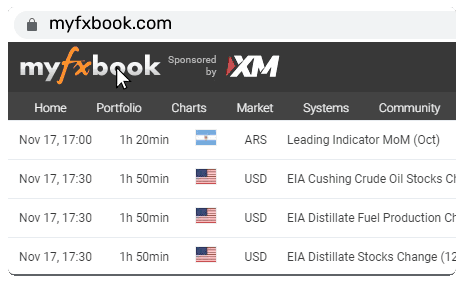Eurozone GDP (Q2, 1st release)

Eurozone GDP grew 0.3% q-o-q in Q2, a 0.1pp upside surprise.Although the latest data show the Eurozone avoided technical recession, the economy has seen near-stagnation over the past year.With the labour market resilient, it has been a ‘job full stagnation’ keeping inflation elevated and meaning policy may still have a bit of ground to cover.Facts
Eurozone GDP grew 0.3% q-o-q in Q2, better than HSBC and consensus expectations of a 0.2% rise (Chart 1). This took the annual rate of growth to 0.6% y-o-y (consensus: 0.5%).
As expected, this means that the Eurozone returned to growth in Q2 after a mild (-0.1% q-o-q) contraction in Q4 2022 and stagnation in Q1 2023. Indeed, the upward revision to Q1 2023 (from -0.1% q-o-q to 0.0%, which Eurostat made a few weeks ago) means that the Eurozone no longer had a technical recession.
The 0.1pp surprise to our forecast of 0.2% q-o-q growth largely reflects a bigger contribution from the non-big four economies. Irish growth (+3.3% q-o-q) more than bounced back from a weak Q1.
The biggest upside surprise came from France, where GDP rose 0.5% q-o-q in Q2 (consensus: 0.1%), thanks to a sharp rebound in exports driving another strong contribution from net trade (+0.7ppt). However, digging into the data shows the upside surprise wasn’t as positive as it appeared. Domestic demand was weak. French consumer spending fell by 0.4% q-o-q after dropping by 0.8% q-o-q in Q4 2022 and being flat in Q1 2023 (French GDP, 28 July).The German economy grew by 0.02% q-o-q according to the flash release. This was a bit lower than both consensus and HSBC (+0.1% q-o-q) forecasts. Although the German flash release does not contain any breakdown of the GDP data, the statistical office indicated that private consumption rebounded a bit and contributed positively to growth after falling very sharply in the previous two quarters.Italian GDP contracted 0.3% q-o-q in Q2, after 0.6% q-o-q in Q1, below consensus expectations for a flat reading, but closer to HSBC forecast (-0.1% q-o-q). The statistical office mentioned a negative contribution of domestic demand, with a fall in goods consumption partially offset by a small rise in service consumption, and flat external demand.Spain GDP rose 0.4% q-o-q in Q2, after 0.6% q-o-q in Q1, in line with consensus and a tad lower than expectations (0.5%). Private consumption rebounded (1.6% q-o-q) after two consecutive quarterly contractions, likely supporting by rapidly falling inflation, while investment surged 4.6% q-o-q, with housing investment faring particularly well (+7.3%). This was confirmed by the construction sector growing 2.8% q-o-q, while manufacturing dropped 1.2% q-o-q (and services was up 1.0%). Otherwise, net trade was a drag, as exports fell 4.1% q-o-q after the sharp rise in Q1.Implications
The Eurozone recession has been on and off like a lightbulb. The initial release for Q4 2023 showed marginally growth, suggesting recession might be avoided – though this was subsequently revised down to a modest contraction. Then in early June, Q1 2023 was also revised down to -0.1% q-o-q, implying a technical recession. However, this has already been revised back up to flat. Alongside yesterday’s +0.3% q-o-q in Q2 2023, recession has been avoided again.
However, whether there has been a technical recession or not isn’t really that important: the broad picture is that we have seen very sluggish Eurozone growth for a year now, with the quarterly growth rate averaging just 0.1% over the four quarters to Q2. Eurozone GDP is just 2.7% above its Q4 2019 level (Chart 2).
Recent data suggest the sluggish pace of growth is likely continue, particularly when we consider how weak domestic demand has been this year. The flash PMIs for July fell quite sharply in July, with the Eurozone composite now pointing to a falling output and the Q2 ECB Bank Lending Survey (BLS) showed another tightening of credit standards and falling loan demand, particularly for firms. Even so, the strong housing investment observed in Spain might be a sign that the monetary tightening is not fully biting (at least not yet).
Moreover, even now the labour market in the service sector seems relatively tight. The June PMI still suggests firms are hiring and, in turn, wage pressure remains high. So, while we might now describe the Eurozone as in a ‘job full stagnation’ as opposed to the ‘job full recession’ the fact is that unit labour costs in Europe are still growing at a rate well more than that consistent with a 2% inflation target. The labour market backdrop alongside modest upside surprise to GDP last night, as well as the stickiness of core inflation in July (Eurozone inflation suggests that even if the ECB doesn’t have a lot of ground to cover, a final 25bp rate rise in September still seems more likely than not.
1. The Eurozone returned to growth in Q2…Source: Refinitiv DataStream, HSBC calculations
2. … though the broad picture of near stagnation remainsSource: Refinitiv DataStream, HSBC calculations
This content may have been written by a third party. ACY makes no representation or warranty and assumes no liability as to the accuracy or completeness of the information provided, nor any loss arising from any investment based on a recommendation, forecast or other information supplied by any third-party. This content is information only, and does not constitute financial, investment or other advice on which you can rely.



















